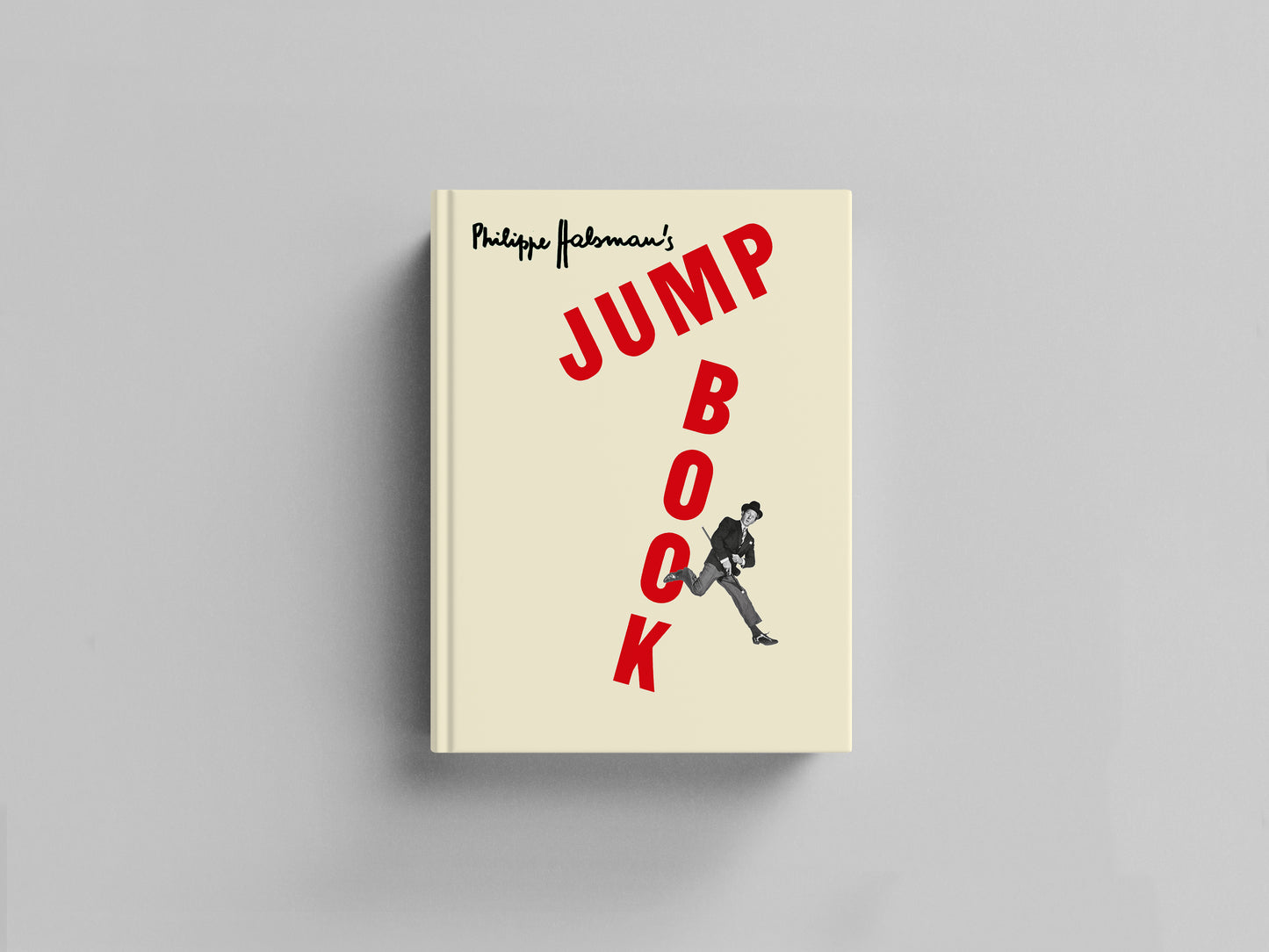Damiani takes great pleasure in re-publishing this classic photo book from 1959 in a beautifully printed facsimile edition. With nearly 200 photographs of Halsman’s famous subjects in midair, these uniquely witty and energetic images of airborne movie stars, politicians, royalty, artists, and authors have become an important part of Halsman’s photographic legacy. For six years in the mid-1950s, he ended his portrait sessions by asking his sitters to jump. Grace Kelly hikes her skirt with surprising moxie. Marilyn Monroe, Edward Steichen, Audrey Hepburn, Robert Oppenheimer, John Steinbeck, Weegee, Aldous Huxley, Marc Chagall, Salvador Dali, Brigitte Bardot, and Groucho Marx all take the leap of faith – ensuring that we see something about them that we hadn’t quite seen before. It is a tribute to Halsman’s powers of persuasion that Richard Nixon, the Duke & Duchess of Windsor, Judge Learned Hand (in his mid-80s at the time) and other figures not known for their spontaneity could be talked into rising to the challenge. He called the resulting pictures his hobby. And in Philippe Halsman’s Jump Book, he tells us, with mock-academic wit, that the photos are studies in the new science of Jumpology. The jumps took place wherever the rest of the shoot had been located: in the studio, outside or inside, at the subject’s home or workplace. “When you ask a person to jump,” Halsman wrote, “his attention is mostly directed toward the act of jumping, and the mask falls, so that the real person appears.” As Roberta Smith, chief art critic of the New York Times, wrote in her review of the 2010 Halsman/ Jump exhibit in New York: “There is a sublime silliness to Halsman’s images that can make you laugh regardless of how often you see them. They offer incontrovertible proof of Schiller’s claim that ‘all art is dedicated to joy.’ Evidently the simple act of getting off the ground requires giving in to something like joy. You have to let go.” It is not coincidental that Halsman devised Jumpology in the era of Action Painting, which sowed the seeds that would soon grow into performance art. Roberta Smith continues: “Halsman pushed his own form, the studio portrait, to extremes, exaggerating its basic components in ways that make us more aware of them: the trust that must exist between photographer and subject; the split-second ‘performance’ that any still camera captures; the uncontrollable revelations of character; the way we all try to rise, as it were, to the occasion of a photograph.”
Portrait photographer Philippe Halsman (1906-79) was born in Riga, Latvia. The Second World War forced Halsman to flee to New York in 1940, where he established himself as an in-demand portrait photographer, shooting covers for virtually every major American magazine.
Shipments are made worldwide by express courier.
Delivery is expected within 7 working days after registration of payment.
Shipping costs vary depending on the weight of the shipment and the country of destination, and are calculated automatically when the order is placed.
Pursuant to Article 5 of Legislative Decree No. 185 of 22 May 1999, if the customer is a consumer (i.e. a natural person who purchases goods for purposes not related to his or her professional activity, or who makes a purchase by omitting a VAT number from the order form), he or she has the right to withdraw from the purchase contract for any reason whatsoever, without the need to provide explanations and without any penalty, within 14 working days from the day of receipt of the goods.
The right of withdrawal shall be exercised by sending, within the aforementioned term, a written notice to the geographical address of the supplier's registered office by means of a registered letter with acknowledgement of receipt. The communication may also be sent, again within the same deadline, by means of a PEC or facsimile.
The consumer shall enclose with the communication all the references of the order (order date, order number, precise references identifying the party concerned, company or private individual.
The goods you wish to return must be undamaged and in their original packaging.
The consumer must also supplement the communication with his or her complete bank details in order to obtain reimbursement of the sums paid (current account number, ABI and CAB, CIN code; for foreign countries, the BIC and IBAN codes), which will be carried out as quickly as possible and in any case within fourteen days of the date on which the supplier became aware of the consumer's exercise of the right of withdrawal.
As the only charge for exercising the right of withdrawal, the consumer shall bear the direct cost of returning the goods. In the case of payment by credit card, the sums shall be returned net of bank commission charges (2.5%).
In the event of a dispute, reference will be made to the competent court.


